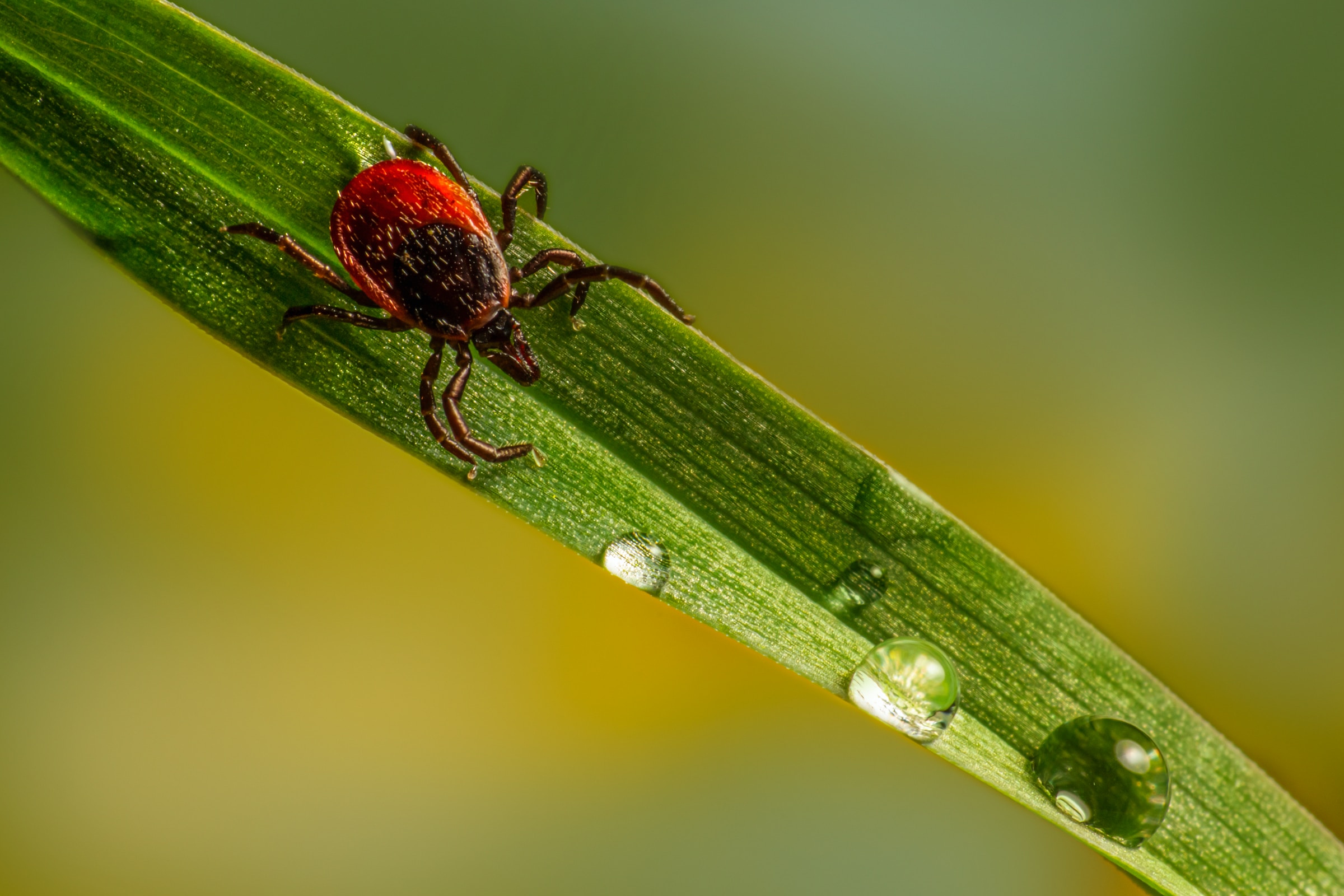
How Do I Know If I Have Lyme Disease?
Lyme disease can affect many parts of the body, including the joints, heart, and brain. It becomes harder to treat the longer it goes undetected, and symptoms can vary. It’s important to remember that not every tick bite leads to Lyme disease. Only deer ticks and western blacklegged ticks carry Borrelia burgdorferi, the bacteria that causes it. The risk of infection increases the longer an infected tick remains attached.
Early Signs & Symptoms of Lyme Disease

The incubation period for Lyme disease—the time between infection and the first symptoms—ranges from 3 to 30 days. Early signs can vary, but there are several classic symptoms to watch for.
The most recognizable is the erythema migrans or “bull’s-eye” rash, which often expands from the tick bite and may appear elsewhere on the body. This rash develops in about 80% of infected people within the first month.
Other early symptoms can resemble the flu, such as headache, body aches, fever, and fatigue. Because Lyme affects everyone differently, some may experience mild symptoms while others develop more severe ones. According to the CDC, common early symptoms include:
- Joint pain and swelling
- Increasing headaches
- Bell’s palsy (muscle weakness in the face)
- Heart palpitations
- Sleep disturbances
If you have ongoing symptoms or concerns, it’s best to consult your healthcare provider.
Lyme Disease Testing
Serology testing is usually the first step your healthcare provider will take when diagnosing Lyme disease. This blood test looks for antibodies—proteins your body produces in response to infection. The CDC recommends a two-tier testing process, meaning both tests must be positive to confirm a Lyme diagnosis.
It’s important to note that testing has its limitations. If the test is done too soon—within the first 2–3 weeks of infection—it may return a false negative, since antibodies take time to develop. On the other hand, false positives can occur when antibodies from other infections react with Lyme test markers.
Finally, a positive result doesn’t always mean there’s an active infection. The test detects antibodies, not the Borrelia burgdorferi bacteria itself, and these antibodies can remain in your system for years after the initial infection.
You can read more about serology testing for Lyme disease here.
Tick Testing as a Diagnostic Tool
Another way to support a Lyme disease diagnosis is by testing the tick itself. If you’ve been bitten, the tick can be tested for the bacteria that cause Lyme disease. While tick testing isn’t a replacement for blood tests, it serves as an additional public health resource. A positive result can help you and your healthcare provider act quickly if you suspect exposure and need treatment.
Learn more about tick testing here.
Getting Treatment for Lyme
If you suspect you have Lyme disease, contact your healthcare provider right away. Be prepared to share any test results you have, along with details about when / where you were bitten and any symptoms you may have noticed.
Can I Get a Diagnosis Without Testing?
Yes, in some states, it is possible to receive antibiotic treatment for Lyme disease as a preventative measure, without a positive test. In other areas, a confirmed blood test may be required before treatment can begin. Because of the limitations of serological testing, test results should ideally support—but not solely determine—a diagnosis or treatment plan. Many factors besides the testing should be taken into consideration first, including:
- Location: Some regions have higher rates of Lyme and other tick-borne illnesses.
- Comorbidities: Patients with multiple health conditions may face greater risks if infected.
- Age: The very young and elderly are more likely to experience severe symptoms.
- Tick type: Only deer ticks and western blacklegged ticks carry the Lyme bacteria. Transmission typically requires the tick to be attached for approximately 18–24 hours.
The CDC’s Recommended Treatment Options
Adults:
- Doxycycline 100 mg, twice daily
- Cefuroxime axetil 500 mg, twice daily
- Amoxicillin 500 mg, three times daily
Duration: 10–21 days
Children:
- Doxycycline 4 mg/kg, divided into two daily doses
- Cefuroxime axetil 30 mg/kg, divided into two daily doses
- Amoxicillin 50 mg/kg, divided into three daily doses
Duration: 10–21 days
With prompt antibiotic treatment, most tick-borne diseases can be completely cured – in some cases, even before symptoms appear.
Worried About a Recent Tick Bite?
If you’ve removed a tick and want peace of mind, TickCheck offers fast and reliable tick testing services. Simply send the tick to our lab, and we’ll identify the species and test it for Lyme disease and other common pathogens. Knowing whether a tick was carrying disease can help you and your doctor make informed decisions about next steps.




You must be logged in to post a comment.